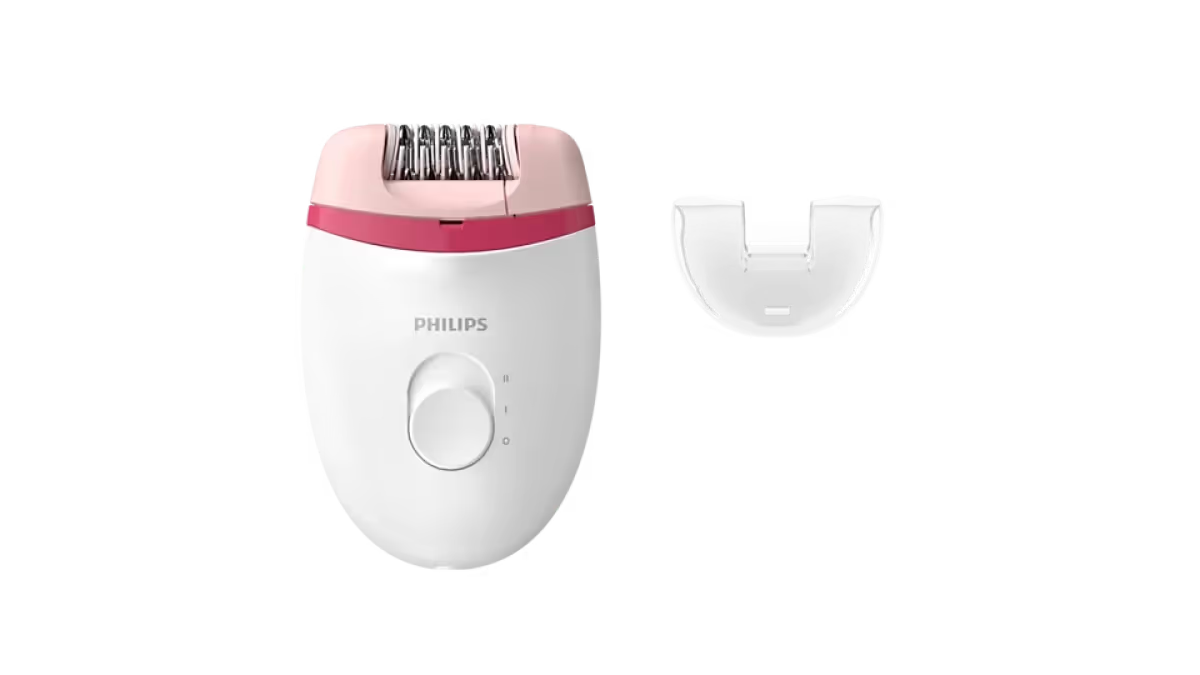Thinking about the next big thing in e‑commerce can feel daunting when you see so many sellers offering the same products. One way to cut through the noise is by focusing on micro‑niche dropshipping. Instead of competing in broad categories, a micro‑niche targets a narrow segment of a larger market. It reduces competition and helps you stand out to buyers who are seeking something specific
In this blog we’ll look at emerging micro‑niches for AliExpress dropshipping and explain why these small markets offer big potential in 2026 and beyond.
What makes micro‑niche dropshipping worth your time?
Here’s why you should care about trying out micro niche dropshipping:
Lower competition and more loyal customers
In a world where everyone sells everything, micro‑niches allow you to tailor your marketing to a very specific audience. Concentrating on ultra‑specific markets lets you reduce competition and build a more loyal customer base
By tapping into a smaller but engaged audience, you become a recognised authority and find it easier to deliver messaging that resonates. Instead of fighting for scraps in a broad niche, you stand out as the place to go for a particular product type.
Better SEO and advertising results
Micro‑niche dropshipping isn’t just about lowering competition. Targeted keywords typically have lower advertising costs and better rankings because you’re not competing with huge stores for broad terms
By zeroing in on specific search phrases like “portable infrared cupping massager” rather than “wellness devices,” you pay less per click and convert more visitors into buyers. Keyword research tools and social media trends help you identify these specific terms.
Aligning with consumer trends
Many of the fastest growing product categories for 2026 are based on consumer preferences for health, sustainability, convenience and technology. When you carve out a micro‑niche within these larger trends, you position your store to ride a growing wave.
Emerging micro‑niches to watch in 2026
These are the top emerging micro niches to watch out for in 2026. If you are doing AliExpress dropshipping, you’ll be in luck because you can source products related to them through AliExpress dropshipping suppliers. You can also use the Alidrop app to find winning products and sell them. Anyway, here’s the complete micro niche AliExpress dropshipping list for 2026 and beyond:
1. AI‑powered sleep tech

The artificial intelligence market grows each year, and gadgets equipped with AI are becoming more appealing to consumers. Sleep technology is also rising as people become more invested in sleep quality and affordability
Why it’s promising
- Steady demand: Smart beds, wearable sleep trackers and biofeedback devices appeal to health‑conscious buyers who want real‑time data on their wellbeing.
- Growing accessibility: The cost of sleep tech is falling while AI devices become more versatile, widening the target audience.
- Complementary products: You can bundle AI wellness gadgets with complementary items such as blue light blocking glasses. The blue light glasses market was valued at $2.9 billion in 2024 and is projected to reach $5.8 billion by 2034, driven by remote work and extended screen exposure
Product ideas
- Smart headbands and sleep masks that use EEG sensors to track sleep cycles and provide personalised feedback.
- AI‑enabled massage tools that adapt pressure based on body feedback.
- Blue light blocking glasses targeted at remote workers and students; the market is expanding because professionals and children spend hours on screens
- Smart humidifiers and aroma diffusers that connect to mobile apps and adjust mist levels and essential oil blends based on user preferences.
How to market it
Focus content on relieving stress and improving sleep quality for remote workers, parents and students. Use blog posts and social media to explain how AI insights help customers feel more rested. Show real‑world stories from early adopters and emphasise convenience.
2. Eco‑friendly home office essentials

Remote work isn’t slowing down—more than 15% of jobs are now remote, more than double the pre‑pandemic level. Remote workers need ergonomic setups and accessories that don’t harm the planet. Consumers also increasingly value sustainable products. This opens up a micro‑niche for eco‑friendly home office accessories.
Why it’s promising
- Work‑from‑anywhere lifestyle: People need gear that makes work comfortable, whether at home or while travelling. Ergonomic chairs, portable laptop stands and noise‑cancelling headphones address common pain points.
- Sustainable: Items made from recycled or renewable materials resonate with buyers who care about environmental impact.
- Market growth: The home décor market is forecast to grow from $681 billion in 2025 to $880 billion in 2030, driven partly by sustainable materials and technology‑enabled living spaces
Product ideas
- Bamboo or recycled‑plastic desk organisers, monitor risers and cable management kits. These help remote workers tidy their workspace without using virgin plastics.
- Biodegradable phone and tablet stands that fold flat for travel.
- USB‑powered laptop coolers with housings made from recycled aluminium.
- Ergonomic blue light glasses made with plant‑based acetate; the market for blue light blocking glasses is expanding due to digital eye strain
How to market it
Highlight the dual benefits of comfort and sustainability. Include quick tips on setting up eco‑friendly workstations and emphasise the positive environmental impact of choosing reusable materials. Partner with influencers who work remotely to showcase these products in use.
3. Compact self‑care devices

Self‑care products are evolving from basic grooming to include devices that provide wellness on the go. Consumers want to feel pampered without high prices and seek products that align with health and eco‑consciousness. A micro‑niche focusing on compact self‑care gadgets for travellers and digital nomads taps into this trend.
Why it’s promising
- High spending on wellness: The global health and wellness market is projected to grow from $7.19 trillion in 2026 to $11 trillion by 2034, reflecting increased consumer spending on wellness products and services.
- Portability: Travel‑friendly devices like handheld massagers and portable hair tools address the needs of people who work or vacation away from home. Foot tension‑relief slippers and portable cupping massagers are already gaining interest.
- Multipurpose: Combining several functions into a single device—such as a power bank with a built‑in hand warmer or a facial steamer that doubles as a humidifier—adds convenience.
Product ideas
- Portable infrared cupping massagers and acupressure slippers
- Mini electric nose‑hair trimmers and compact hair straighteners
- Travel‑size skincare kits with refillable containers made from recycled materials.
- Foldable yoga mats paired with compact massage balls
How to market it
Target digital nomads and frequent travellers through social media communities and travel blogs. Create guides on maintaining wellness routines while on the move.
4. Smart indoor gardening products

Urbanisation and the shift toward sustainable living are driving demand for smart planters. The smart planter market is projected to grow from $387 million in 2024 to $675 million by 2033, a CAGR of 6.37%, as people look for efficient ways to grow plants in limited spaces. Smart planters equipped with IoT sensors, automated irrigation and mobile apps make gardening accessible to both beginners and experienced growers. When combined with eco‑friendly materials, this forms a micro‑niche of smart indoor gardening products.
Why it’s promising
- Limited space solutions: Urban dwellers want greenery but lack outdoor areas. Smart planters provide optimal growing conditions in small apartments.
- Tech and sustainability: These devices appeal to tech‑savvy consumers and support sustainable practices like water conservation.
- Cross‑selling opportunities: Smart indoor planters can be bundled with plant care tools, organic seeds and decorative pots.
Product ideas
- IoT‑enabled self‑watering planters for herbs and small vegetables.
- Smart plant care kits that include humidity and soil sensors linked to mobile apps.
- Biodegradable planters for seedlings that later transfer into smart containers.
- Indoor vertical gardens that hang on walls and feature modular, climate‑controlled pods.
How to market it
Position your store as helping people reconnect with nature in confined spaces. Create content on how indoor gardening improves air quality and mental wellbeing. Share user‑generated photos and recipes that use herbs grown in these devices.
5. Customisable minimalist jewellery

Small fashion accessories have grown popular because they’re lightweight, comfortable and easy to layer. Consumers are moving away from chunky statement pieces and towards dainty items that can be personalised or stacked. For dropshippers, minimalist accessories offer low upfront costs, high margins and low shipping expenses. A micro‑niche focusing on customisable minimalist jewellery gives shoppers the ability to personalise with names, initials or birthstones. You can even start a bracelet business from home!
Why it’s promising
- Large target audience: Dainty necklaces, stackable rings and minimalist bracelets appeal to a wide demographic and are often bought on impulse
- Low risk: These products are inexpensive to source and ship, and returns are minimal because sizing is simple.
- Personalisation trend: Customers are willing to pay more for items that reflect their identity. Offering engraving or custom stone placement lets you charge a premium.
Product ideas
- Nameplate necklaces and custom birthstone rings made from hypoallergenic metals.
- Stackable minimalist bangles that can be mixed and matched.
- Personalised charms for bracelets or necklaces that celebrate hobbies or pets.
- Layered anklet sets in simple designs that complement casual outfits.
How to market it
Focus on storytelling—share how personalised jewellery can mark life milestones or express unique interests. Use social media to showcase customer designs and encourage photo sharing. Offer bundling deals so shoppers can build their own stacks.
6. Stress‑relief tools for busy lifestyles

Stress affects everyone, and consumers are willing to invest in portable products that help them find balance. The stress‑relief product market includes fidget toys, aromatherapy diffusers, weighted blankets and massaging tools. A micro‑niche focused on compact stress‑relief tools for commuters, parents and students can attract high search volume with relatively low competition.
Why it’s promising
- Universal appeal: Stress relief products cross age, gender and income segments. Even small, affordable items can be purchased repeatedly.
- Growing health awareness: Rising rates of anxiety, depression and chronic diseases have fueled the broader health and wellness market. People seek accessible ways to manage stress amid busy schedules.
- Giftability: These items make great gifts and are easy to upsell during holidays or special occasions.
Product ideas
- Handheld fidget cubes and spinners with tactile features.
- Portable aromatherapy inhalers infused with essential oils for quick calm.
- Miniature weighted lap pads for students or office workers.
- Compact percussive massagers that fit in a backpack.
How to market it
Use content that educates customers about the benefits of short stress‑relief breaks. Collaborate with mental health professionals or yoga instructors to promote mindfulness routines alongside your products. Provide gift guides around exam seasons and holidays.
Tips for finding your own high traffic, low competition micro‑niches
Identifying opportunities doesn’t stop with the ideas above. Here are methods to discover and validate micro‑niches:
1. Follow social media trends
Platforms like TikTok and Instagram are goldmines for spotting emerging micro‑niches. Monitor hashtags and communities related to your interests. If you notice a surge in content around zero‑waste living or urban gardening, that may signal a new niche worth exploring. Pay attention to engagement and supply chain metrics to gauge interest.
2. Use keyword research tools
Tools such as Google Keyword Planner and Ahrefs help you find search terms with reasonable volume and low competition. Look for phrases that indicate a specific need, like “eco‑friendly desk organizer” or “smart sleep mask.” Compare search volumes across variations and pick terms where demand outpaces supply.
3. Analyse market demand and competition
Once you have a potential micro‑niche, analyse how saturated it is. Look at the number of competing stores and the prices they charge. Tools like SpyFu or SEMrush provide insights into competitors’ keywords and traffic. If there’s room for differentiation through design, sourcing or branding, the niche may be viable.
4. Prioritise product quality and supplier reliability
Finding reliable suppliers is crucial when you’re targeting a specific audience. Poor quality can ruin your reputation. Request samples, test products personally and assess shipping times. Check supplier reviews and confirm they meet ethical and safety standards.
5. Use AliDrop
AliDrop offers an all‑in‑one solution for AliExpress, Alibaba and Temu dropshipping. You can import products with one click, automate order fulfilment and integrate with Shopify, Amazon and eBay. Custom branding options and an AI store builder help you differentiate your micro‑niche store. The marketplace is updated daily, giving you fresh product data to identify emerging micro‑niches.
Conclusion
Micro‑niche dropshipping gives you a way to stand out and build loyal customer bases by focusing on very specific product segments. Whether you choose AI‑powered wellness devices, eco‑friendly office gear, portable self‑care gadgets, smart planters, custom jewellery or stress‑relief tools, the key is to align your products with growing consumer trends in sustainability, technology and wellness.
By using tools like Alidrop for sourcing and automation, you reduce the operational burden and can spend more time refining your niche. Keep monitoring trends, listening to your customers and test new ideas, you’ll find your perfect micro-niche for AliExpress dropshipping eventually.
Emerging Micro-Niches for AliExpress Dropshipping FAQs
What is micro‑niche dropshipping and how is it different from general dropshipping?
Micro‑niche dropshipping focuses on hyper‑specific segments of a larger market. Instead of selling broad categories like “home decor,” you might sell AI‑enabled smart planters for small apartments or eco‑friendly desk organisers. This approach reduces competition and allows you to tailor your marketing, leading to better SEO and more loyal customers.
How can I find high‑traffic, low‑competition micro‑niches on AliExpress?
Start by monitoring social media platforms for emerging trends and using keyword research tools to identify specific terms with good search volume and low competition. Analyse competitor keywords through tools like SpyFu or SEMrush. Once you spot an opportunity, validate demand by checking reviews and testing products. AliDrop’s marketplace update helps you stay current.
Why are eco‑friendly home office products a good micro‑niche for 2026?
Remote work is here to stay; more than 15 percent of jobs are already remote. At the same time, consumers are seeking sustainable materials for home goods. Eco‑friendly office accessories combine these trends and are supported by growth in the home décor market, which is projected to reach $880 billion by 2030
What should I consider when sourcing products for micro‑niche dropshipping?
Quality and reliability matter more in a micro‑niche because customers are looking for specialised items. Request samples, review supplier ratings and test shipping times. Use platforms like AliDrop to source from verified AliExpress, Alibaba and Temu suppliers.
How do I market stress‑relief products effectively?
Focus on the universal appeal of stress relief and highlight how your products fit into busy lives. Create content explaining the benefits of short relaxation breaks and pair your products with mindfulness tips. Collaborate with mental health professionals or wellness influencers. Emphasise gift‑worthiness to attract buyers during holidays or exam periods.
Can micro‑niche dropshipping support long‑term business growth?
Yes. Micro‑niches often evolve as consumer preferences change, allowing you to expand your product range gradually. By staying on top of trends and using tools like Alidrop’s AI product research and Spocket’s supplier network, you can maintain a pipeline of high‑traffic, low‑competition micro‑niches. The approach builds strong brand loyalty and can be scaled by introducing adjacent niches over time.






















